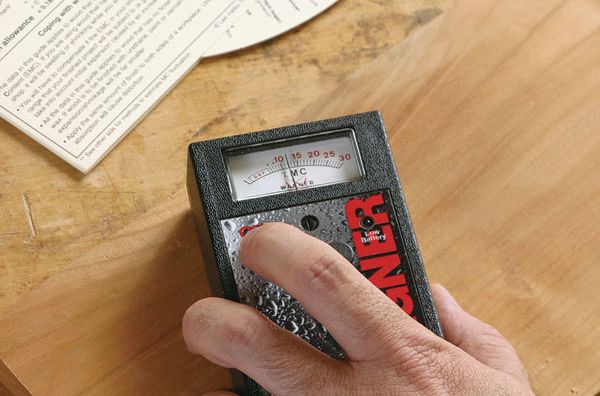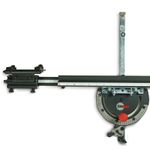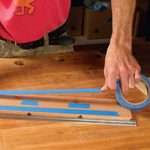Stop Guessing at Wood Movement
Figure out exactly how much of a gap to leave in doors and drawers, no matter the wood or season
Synopsis: Seasoned woodworkers know that to ignore wood movement is a sure path to heartache. A drawer cut too wide will expand in humid weather and will almost certainly stick; a panel cut too narrow may shrink and show unsightly gaps. It’s not hard, however, to figure out exactly how much a board will expand and contract, as long as you know the wood species, the current moisture content, the grain orientation, the width, and the expected highest and lowest moisture content for your area. Contributing editor Christian Becksvoort explains two methods for calculating wood movement. Equipment includes a moisture meter, a calculator, a ruler, and a dial (or vernier) caliper. One method uses a Wood Movement Reference Guide, the other a chart and formula.
Seasonal changes in humidity cause wood to expand and contract (shrink) in width. Woodworkers refer to this phenomenon simply as “wood movement.” In relatively narrow boards, say, under 5 in., this movement is rarely an issue. But, as boards get wider, wood movement becomes an important consideration. Ignore it, and problems wait in ambush.
If you build a snug-fitting drawer in midwinter, when humidity typically is low and the wood has shrunk to its minimum width, you’ll almost certainly have problems come the end of summer, when humidity is high and the wood has expanded to its maximum width. A drawer cut too wide, if it expands, can end up jammed in the drawer opening and stuck fast. It also can push against the drawer opening and stress the joints. By the way, humidity has no measurable effect on the length of wood.
When I teach case construction, the two most frequent questions are “How much gap do I leave over this drawer?” and “How far should my door panel fit into the frame grooves?”
Most woodworkers make such decisions based on little more than a guess. But luck doesn’t have to be your best friend here. You can predict pretty accurately how much a board will move simply by knowing: (1) the species, (2) the grain orientation (flatsawn or quartersawn), (3) the width, (4) the current moisture content (MC), and (5) the expected highest and lowest MC.
To collect this data, you’ll need a Wood Movement Reference Guide (available from Veritas, www.leevalley.com, for about $6), a moisture meter, a calculator, a ruler, and a dial (or vernier) caliper. Or, you can skip the guide and use a chart and formula (see p. 81). A decent moisture meter can be had for around $100.
Determining the width of a drawer To determine wood movement for an inset drawer front and sides, I first cut the drawer front and sides for a friction fit.
Sizing a red-oak drawer in winter—To determine the final drawer width, though, I need to collect the pertinent information and use the Wood Movement Reference Guide. As an example, let us assume an 8-in.-wide drawer opening. The wood is flatsawn red oak. Because it’s Maine in late winter, the MC is 6%, as low as it will ever get.
I have no way of knowing where in the world my furniture pieces eventually will be shipped, so I assume a potential worstcase scenario of 16% MC—a 10% increase. The guide shows a movement value of 0.0037 for flatsawn red oak. To calculate the worst-case wood expansion, I multiply the movement value (0.0037) by the width (8 in.), by the worst-case increase in MC (10%). Doing the math I get [0.0037 × 8 × 10] = 0.296 in., or 19⁄64 in., just under 5⁄16 in. Therefore, I cut the drawer front and the two drawer sides to 711⁄16 in. (8 in. minus 5⁄16 in.).
From Fine Woodworking #187
For the full article, download the PDF below:
Fine Woodworking Recommended Products

Sawstop Miter Gauge

DeWalt 735X Planer

3M Blue Tape





















Log in or create an account to post a comment.
Sign up Log in